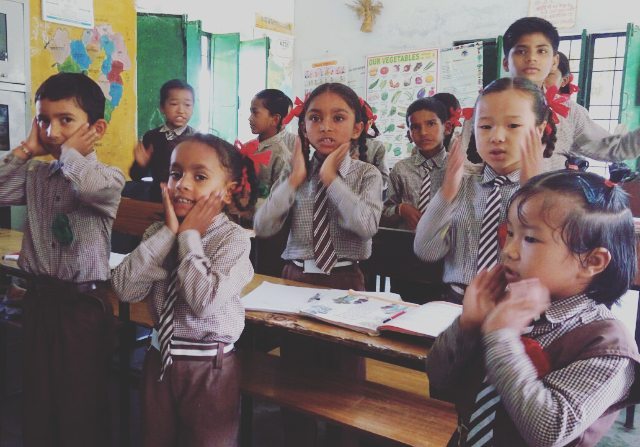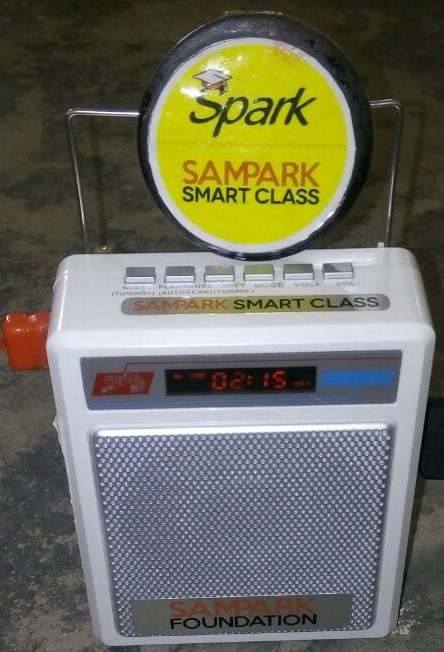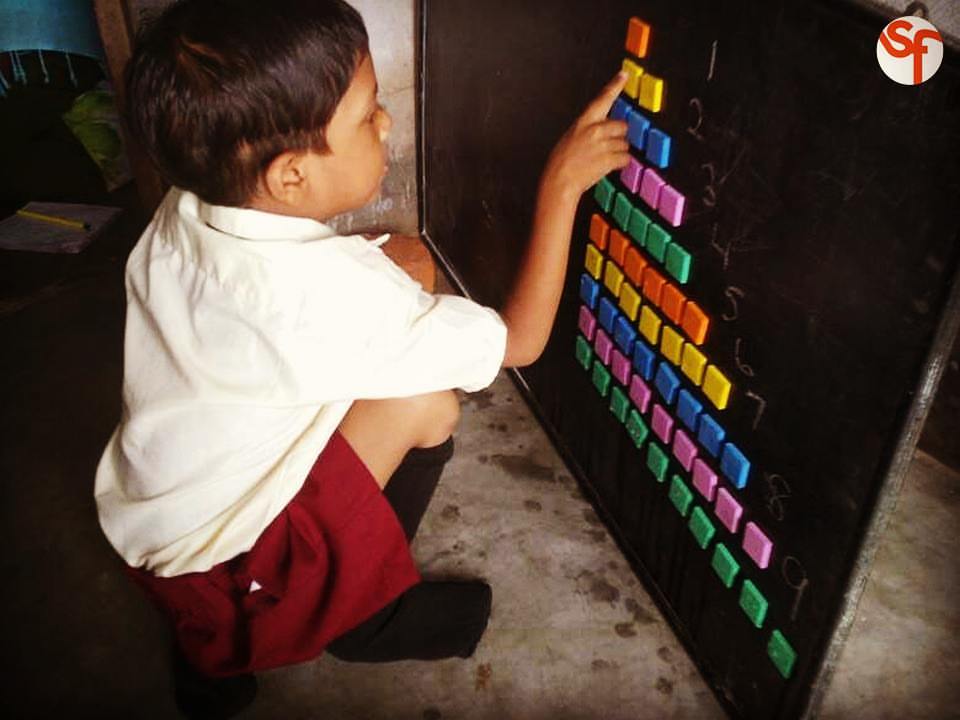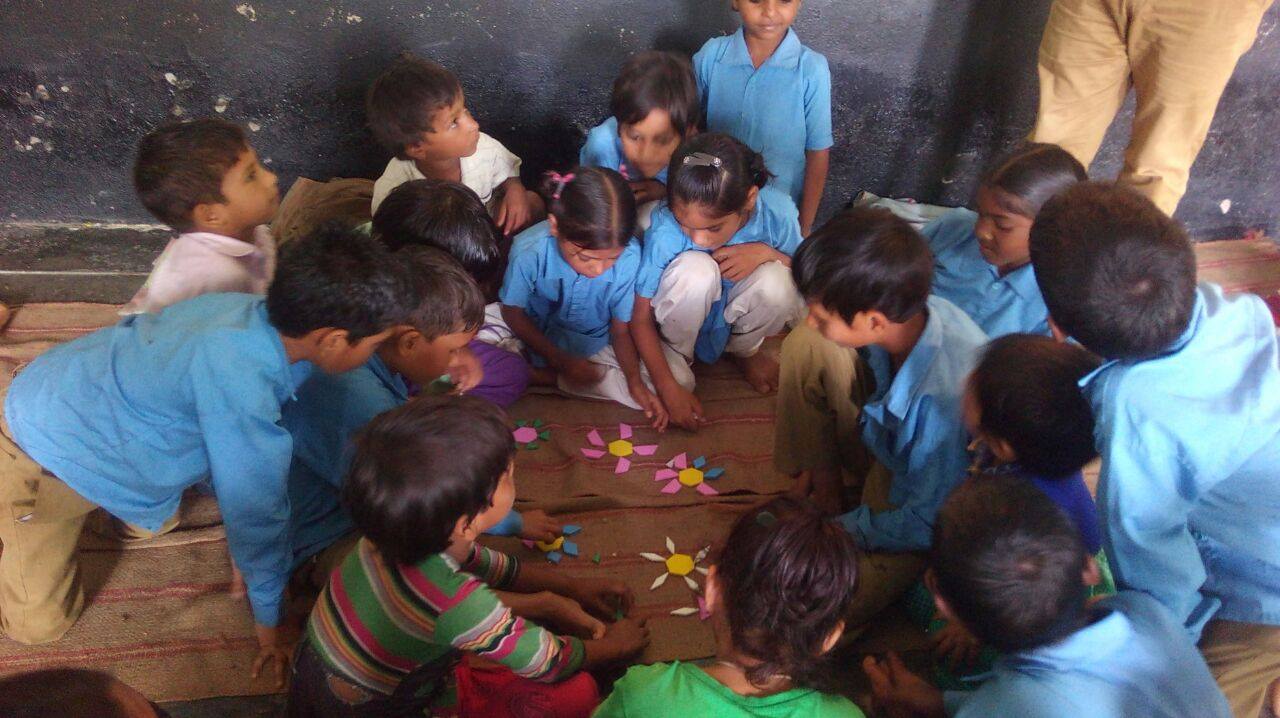When ‘Snakes and Ladders’ Stops Being Just a Game, Young Lives Are Transformed
“Classrooms become more exciting for children when lessons are presented to them through stories, folklore, songs, games, and hands-on activities. Not only does this make it easier for them to understand the subject, but it also increases the students’ attention spans."

While we see statistics that show how India’s education sector has grown by leaps and bounds over the last few years, access to quality education; especially in the primary stage in rural India, is still a problem that needs to be addressed.
Unfortunately, many of India’s government schools in rural areas fail to teach their students very much. A number as large as 76% of children in grade five can’t read simple sentences in English, and one out of five is unable to recognise numbers above nine, according to the 2014 Annual Status of Education Report.
The findings of the 2016 Annual Status of Education Report (ASER) survey, a household survey of schooling and learning levels in rural India shows that around 3.5% of children between the ages of 11 and 14 years, and 13.5% between the ages of 15 and 16 years were dropouts, while over 25% of children in grades I to VIII were absent from school on the day a team visited the school.
Some of the reasons often cited for children dropping out are the distance between school and home, safety concerns for girls and a lack of proper sanitation facilities (especially for girls).
However, one of the main concerns remains lack of interest, both among the students and the educators.

The advent of the Internet has certainly been a boon to mitigate this particular issue. As I write this article, I am watching a video of a group of students in a school in Chhattisgarh dancing away happily to a local tune. As I wonder what the song means, I am told that while the tune is known to them, the words are new.
The song speaks about our National flag. Of how the flag is swaying seeing the nation’s progress and glory. Isn’t that a wonderful way to engage and teach the kids?
Also read: Leaving No One Behind: Here’s the Kind of Education That Can Transform India
One challenge with such content is that to be effective; it has to be tailored to the target audience. What works for a child in a school in Chhattisgarh may or may not work for a child in a school in Gurugram.
Not only do the two children come from very varied socio-economic backgrounds but also what they are both exposed to is very different.

Understanding these differences and designing a curriculum that will benefit both these students is the need of the hour.
“Currently, primary education doesn’t create the foundation necessary for further learning,” says Rukmini Banerji, Pratham’s CEO.
“Half the children in grade five aren’t even at grade-two level. They cannot make meaningful progress after grade five when the textbooks get bigger, and the curriculum gets heavier. More and more children lag behind.”
How does one make learning interesting?
Renu Siwach, an educator from Gangwa in Hisar, speaks of incorporating unique teaching aids to make the lessons relatable. She says, “The freedom to explore the unstructured helps in making our lessons more interesting for the students. Visual aids, we have noticed are also a big hit, since the children remember these for a longer period. Once the concept is clear, using the content in the books to reiterate our point helps.”
“Classrooms become more exciting for children when lessons are presented to them through stories, folklore, songs, games, and hands-on activities. Not only does this make it easier for them to understand the subject, but it also increases the students’ attention spans,” says Vineet Nayyar, founder of Sampark, an organisation that has been working with 76,000 government schools in four states to bring about changes.
Sampark Smart Shala Program is an innovative approach to retain and create interest among the students.
With the help of an aid called SamparkDidi, a battery-operated Smart Class kit, this organisation is making a difference and raising the level of confidence in students.

The device has 30 stories and 15 rhymes to teach almost 500 English words. For mathematics, there are 100 pre-loaded activities meant to teach 23 basic concepts. The kit comes with control buttons, a speaker set, an LCD panel and a MicroSD card pre-loaded with lessons in Maths and English.
Also Read: How the Simple Act of Eating Together Is Tackling Malnutrition in Rural India
Meena Shukla, an educator from Lakhanpur, says, “The kit is so well researched and equipped that when we were attending the training programme, we were all excited about taking it back to our students.”
“Many of my students had a fear of mathematics, but with this kit we have been able to help those kids to a very large extent.”

The kit is innovative in the way it uses interactive, everyday tools that are relatable for the children to teach them important and even difficult concepts. For instance, nursery rhymes, folklore and board games are used to reinforce mathematical concepts!
Take the nursery rhyme ‘Five little monkeys jumping on the bed’. Would you have ever imaged using this rhyme to teach the concept of subtraction? A popular board game like Snakes and Ladders is teaching the children basic addition while they are having fun playing the game.
One of the USPs of Sampark’s work is using the already available tools to help teach children.

By using simple audio-visual aids like these, children are being motivated to stay focused and self-motivated. What organisations like these are doing is also empowering the children to think for themselves and make decisions, while not making learning seem like a chore.
While bringing about reforms in the educational sector seems like a herculean task, this organisation is making all the right moves.
This article is a part of The Better India’s attempt to drive conversation around the United Nations’ Sustainable Development Goals (SDGs) and where India stands with regards to meeting these goals. Many organisations across the country are helping India proceed towards fulfilment of these goals and this series is dedicated to recognising their efforts and the kind of impact they have created so far.
Like this story? Or have something to share?
Write to us: [email protected]
Connect with us on Facebook and Twitter.
NEW: Click here to get positive news on WhatsApp!
If you found our stories insightful, informative, or even just enjoyable, we invite you to consider making a voluntary payment to support the work we do at The Better India. Your contribution helps us continue producing quality content that educates, inspires, and drives positive change.
Choose one of the payment options below for your contribution-
By paying for the stories you value, you directly contribute to sustaining our efforts focused on making a difference in the world. Together, let’s ensure that impactful stories continue to be told and shared, enriching lives and communities alike.
Thank you for your support. Here are some frequently asked questions you might find helpful to know why you are contributing?


This story made me
-
97
-
121
-
89
-
167













